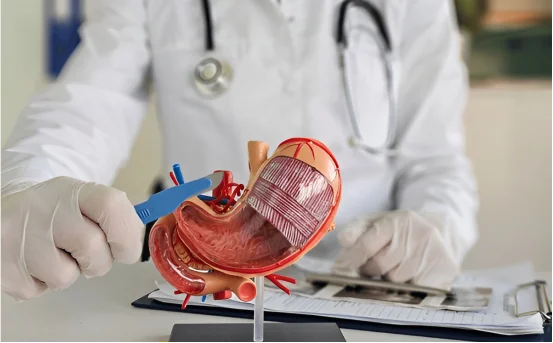Sleeve Resection Surgery, also known as a specialized procedure, is often performed to treat lung conditions, such as lung cancer, bronchial tumours or obstructions of the airways. This is a type of lung-sparing procedure, which means that it removes the affected part of the lung or bronchus without removing the entire lung.
Knowing the early signs and symptoms for sleeve resection surgery that could indicate a need for sleeve-resection surgery is critical. These symptoms can be vital in assisting with early diagnosis and saving lives if addressed quickly.
What is Sleeve Resection Surgery
Sleeve Resections are performed in cases where a lesion or tumor is located within the main airway (bronchus). The surgeon does not remove the entire lung but instead, he removes part of the bronchus. He then reconnects the healthy end. This surgery is performed most often to treat central lung tumors such as non-small lung cancer without compromising lung function.
This is a good alternative to pneumonectomy or lobectomy for those with limited lung capacity or who need lung-sparing therapy.
Why Sleeve Resection is Performed
Sleeve resection is indicated when the tumor cannot be safely removed without compromising the lung. Some of the most common medical conditions are:
- Non-small cell lung cancer
- Bronchial Carcinoid Tumors
- Benign airway tumours
- Tracheobronchial Stenosis (narrowing the airway)
- Complications of pulmonary tuberculosis
This surgery is effective in preserving lung function and removing all tumors, thereby improving patient quality of life.
Sleeve Resection Surgery Symptoms
Understanding the Symptoms for Sleeve Resection Surgery
A proper diagnosis is necessary to confirm the need of surgery. However, certain clinical symptoms may be an early indicator that a condition could require a sleeve-resection. These signs can help diagnose and treat patients faster.
- Chronic Cough:- A persistent cough lasting more than eight weeks is one of the first and most common symptoms. This could indicate bronchial blockage or a tumor growing inside the airway.
- Dyspnea (shortness of breath):- If a tumor blocks airflow to the lungs, breathing difficulties can develop. Even when at rest or doing light activities, patients may feel winded.
- Respiratory Infections Recurring:- A underlying problem could be a recurrence of infections such as bronchitis and pneumonia. If the infections persist and do not resolve with antibiotics then a bronchial tumour could be at the root of it.
- The Stridor or Wheezing:- If you hear a whistling noise when breathing, it could be a sign of airway obstruction caused by enlargement or compression. It is particularly concerning when wheezing occurs in one lung.
- Hemoptysis is the coughing up of blood:- Even small amounts of blood in the lungs are a warning sign and should be evaluated by a doctor immediately. This can be an indication of lung cancer, bronchial tumours or other airway disease.
- Unintentional Weight Loss:-If you lose weight without making any changes to your diet or exercise, it could be a sign of a cancerous illness. It is important to not ignore this symptom when it occurs in conjunction with coughing or breathlessness.
- Chest pain or discomfort:- Unexplained chest discomfort could be caused by a mass pressing on the lung tissue or bronchus.
- Fatigue and weakness:- People with lung diseases or tumors that reduce oxygen consumption are often tired, even when they don’t exert themselves.
When Should You Consult Your Doctor?
Consult a pulmonologist if you or someone else you know experiences any of these symptoms. As lung disease advances, symptoms become more obvious. Early evaluation with chest X-rays or CT scans can help to determine the exact diagnosis and develop an effective treatment plan.
Early Diagnosis is Important
Early diagnosis is a key factor in determining the success of sleeve-resection surgery. Early diagnosis of lung cancer and airway tumors can help patients avoid invasive surgery such as a full lung removal.
Patients who undergo early surgery may also experience:
- Faster recovery
- Better postoperative lung function
- Reduced surgical risks
- Long-term survival is improved
Conclusion
Sleeve Resection Surgery allows the removal of central lung tumours, while maintaining as much healthy lung tissue as possible. Understanding the symptoms of this procedure can have a big impact on outcomes.
Do not delay in seeking medical help if you are experiencing persistent coughing, breathlessness or chest infections. Early detection and timely surgery can save lives and protect the lungs.























